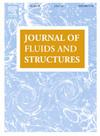Motion of a barge beside a fixed box: Improved relative velocity roll damping estimates, and experiments
IF 3.5
2区 工程技术
Q1 ENGINEERING, MECHANICAL
引用次数: 0
Abstract
Side-by-side offloading is currently the most common operation by which a Floating LNG (FLNG) facility transfers liquified cargo onto a carrier. Operability is limited by a range of criteria, of which the relative motion between the two vessels is one of the most critical. As the FLNG is relatively larger and does not move as much in response to waves, the prediction of carrier motion is thus of great importance in operability prediction. Roll motion is strongly influenced by viscous damping and is therefore typically difficult to predict within a potential flow framework. This study presents a comparison of a numerical model of vessel motions, based on linear potential flow theory, and experiments conducted in a deep water wave basin, where both vessels are simplified rectangular boxes. The roll damping formulation used to add viscous damping in the time domain is a particular focus of the numerical modelling. It is observed that using roll methods developed for isolated vessels may under-estimate roll damping for the scenario where two vessels are closely positioned, as the second hull in proximity significantly alters the surrounding flow field. This paper therefore proposes a modification to a conventional roll damping method, known as the Ikeda method, by introducing a relative velocity formulation that takes into account the flow field around the hull, which includes any possible effects from gap resonance. This modified method is shown to generate improved roll damping predictions compared to standard practice. Overall, the proposed method remains within the linear potential flow framework using standard coefficients, meaning that it can be readily integrated into engineering practice.
驳船在固定箱旁的运动:改进的相对速度滚转阻尼估计和实验
目前,并排卸载是浮式液化天然气(FLNG)设施将液化货物转移到运输船上的最常见操作。可操作性受到一系列标准的限制,其中最关键的是两艘船之间的相对运动。由于液化液化天然气(FLNG)的体积相对较大,对波浪的反应不大,因此预测运输船的运动对可操作性预测非常重要。滚动运动受粘性阻尼的影响很大,因此通常很难在势流框架内进行预测。本研究比较了基于线性势流理论的船舶运动数值模型和在深水波浪盆地进行的实验,其中两艘船都是简化的矩形箱。用于在时域中添加粘性阻尼的滚动阻尼公式是数值建模的重点。据观察,使用为孤立船只开发的滚动方法可能会低估两艘船只紧靠时的滚动阻尼,因为靠近的第二个船体会显著改变周围的流场。因此,本文提出了对传统滚动阻尼方法(即 Ikeda 方法)的一种修改,即引入一种相对速度公式,将船体周围的流场考虑在内,其中包括间隙共振可能产生的任何影响。与标准方法相比,这种修改后的方法能产生更好的滚动阻尼预测结果。总体而言,所提出的方法仍属于使用标准系数的线性势流框架,这意味着它可以很容易地集成到工程实践中。
本文章由计算机程序翻译,如有差异,请以英文原文为准。
求助全文
约1分钟内获得全文
求助全文
来源期刊

Journal of Fluids and Structures
工程技术-工程:机械
CiteScore
6.90
自引率
8.30%
发文量
173
审稿时长
65 days
期刊介绍:
The Journal of Fluids and Structures serves as a focal point and a forum for the exchange of ideas, for the many kinds of specialists and practitioners concerned with fluid–structure interactions and the dynamics of systems related thereto, in any field. One of its aims is to foster the cross–fertilization of ideas, methods and techniques in the various disciplines involved.
The journal publishes papers that present original and significant contributions on all aspects of the mechanical interactions between fluids and solids, regardless of scale.
 求助内容:
求助内容: 应助结果提醒方式:
应助结果提醒方式:


